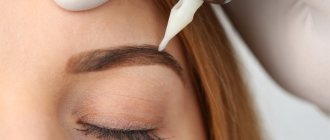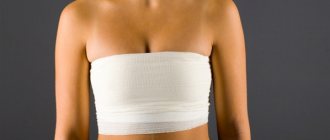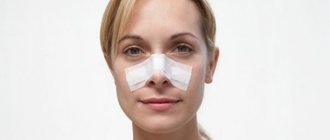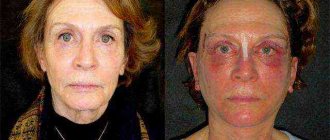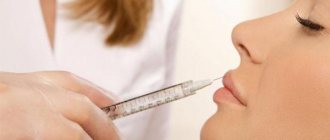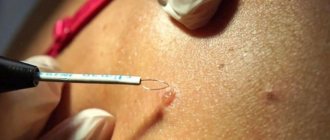How is a mastectomy performed?
The appearance of mastectomy scars depends on the type of surgery that was performed.
Often, the appearance of the scars left after a mastectomy depends on the incision and the technique the surgeon uses.
At the beginning of the operation, the surgeon will make an incision in the skin of the chest to expose the inside of the breast.
Once the surgeon has removed the breast tissue, as well as the muscle and, if necessary, lymph nodes, he will immediately sew up the skin where the incision was made.
When the tissue damage heals, scars will appear on the skin of the chest. Despite the various surgical approaches described in the current material, most mastectomy scars form a horizontal line across the chest, and sometimes these scars have a crescent-shaped appearance. Quite often, the type of incision the surgeon makes and the resulting scars depend on where the cancer first affected the mammary glands.
Over the decades, the techniques used by surgeons during breast surgery have undergone significant changes. Currently, there are a large number of different procedures that are becoming more accessible to women every year. Of course, before surgery, the patient should ask her surgeon what surgical method he intends to use and what results can be expected.
The need and timing of rehabilitation
Breast removal is performed on adult women for strict medical reasons. This radical treatment method is needed when the medicine has no effect. The exception is old age, when surgery can cause death. There are several types of operations:
- A minimally invasive intervention, in which the doctor can remove only a pathological tumor, is performed for benign tumors, breast cysts, and fibroadenoma. The operation is indicated when it is necessary to take a small area of tissue for histology. Histological examination is necessary to describe the origin of the formation in order to exclude an oncological process.
- Sectoral resection is a technique in which part of the mammary gland within a lobe will be removed. In this case, the nipple is preserved.
Regardless of the type of surgical intervention, rehabilitation measures are required. This is necessary to achieve several goals:
- The speedy healing of tissue in the area of the surgical intervention, after which other organs will recover faster.
- Prevention of bleeding, infection with the development of a purulent process.
- Reducing pain.
- Prevention of congestion, which includes lymphostasis - the risk of developing complications increases after surgery.
After a mastectomy, psychological rehabilitation of the woman is simultaneously carried out; a specialist will teach the basic rules of rehabilitation. At the same time, preparations can be made for subsequent plastic surgical interventions, which include the installation of a special implant in the soft tissue for the purpose of reconstruction. The surgeon usually takes photos before and after plastic surgery.
What types of mastectomies result in scars?
Any type of mastectomy results in scars of varying severity. However, there are a number of approaches that a surgeon can use.
Partial mastectomy or lumpectomy
A partial mastectomy involves removing the tumor and some area of breast tissue. Sometimes the surgeon also removes the layer of tissue that covers the chest muscles.
A lumpectomy usually leaves a straight scar on the skin of the chest. Sometimes the surgeon may be able to make an incision in the crease of the breast or around the nipple to try to hide the scar.
A partial mastectomy usually leaves most of the breast intact, so breast reconstruction is usually not required. Women who have had a lumpectomy often need follow-up radiation therapy.
Skin sparing mastectomy
This surgical method is usually performed if a woman intends to undergo breast reconstruction immediately after undergoing the main procedure. A skin-sparing mastectomy involves removing the breast, areola, nipple, and lymph node or nodes. But at the same time, the surgeon leaves the breast skin.
Preserving most of the breast skin allows for immediate reconstruction using either implants or the woman's own tissue. Skin-sparing mastectomy usually leaves a visible, medium to large scar on the front of the breast. However, the surgeon can hide this scar by making an incision in a less obvious location.
Nipple sparing mastectomy
Women who undergo prophylactic or precautionary mastectomy, as well as those who have early stage breast cancer, may be candidates for nipple-sparing mastectomy (nipple-sparing mastectomy). This procedure also involves preserving the skin of the breast and areola.
This surgical approach is usually offered to women with small breasts and leaves a scar on the side of the breast. However, the surgeon can also make an incision in the breast crease, that is, on the bra line, and thus make the scar invisible.
Simple mastectomy
This type of surgical approach involves removing the breast, areola and nipple, and sometimes lymph nodes and some area of breast skin, the area of which depends on the woman's plans for reconstruction. The chest wall and lymph nodes located distant from the operated breast, for example, in the axillary region, are preserved.
Typically, the surgeon makes an oval-shaped incision that goes around the nipple across the entire width of the breast. This incision leaves behind a significant and visible scar.
Modified radical mastectomy
This method involves the surgeon removing all of the breast tissue, as well as the lymphatic vessels in the chest and armpit area. The chest wall usually remains intact. A modified radical mastectomy leaves a large, visible scar on the chest.
What additional treatment is required after a mastectomy?
The main goal of a mastectomy or any other cancer surgery is to remove the minimum amount of tissue necessary to treat the cancer.
Features of rehabilitation after mastectomy. Recommendations and tips
Mastectomy is a type of surgery that involves removing the mammary gland, lymph nodes and subcutaneous fat. But the most difficult part begins precisely after the operation, when the rehabilitation period begins.
Full restoration of the female body after such an intervention requires specific physical and psychological efforts. Breast reconstruction after mastectomy is carried out using different methods, which are chosen by the attending physician.
What does rehabilitation include in the postoperative period?
On the first day after the mastectomy, the dressing is performed and a conversation is held with the attending physician about the progress of the surgical intervention and its features. The patient talks about her complaints, which are considered normal after such an operation.
The woman experiences moderate pain in the area of the postoperative wound, loss of sensation up to the elbow on the affected side, and rarely lumbago in the arm. Dressings are performed every day, but each clinic has its own rules for their implementation and duration.
Recovery should include physical activity and a set of exercises that will restore the functional functioning of the affected arm.
At the time of discharge, the doctor makes recommendations regarding further treatment. This should include:
- chemotherapy;
- hormone therapy;
- radiation therapy.
Attention! At this stage, the psycho-emotional state of the woman remains extremely important, as she goes out into ordinary life, so family and friends must create a good atmosphere.
Nutrition and diet recommendations
A properly organized diet will reduce the risk of developing diseases and also promote rapid recovery. In addition, proper nutrition after a mastectomy will allow the body to recover faster. Diet features:
- The diet should be based on balanced and complete products, thanks to which it will be possible to provide all the vital needs of the body with everything necessary.
- The average daily calorie content of food should be 40 kcal/kg of weight. If you are overweight, then the energy value of the diet will have to be reduced to 30-35 kcal, and if there is a shortage, it will have to be increased to 50-55 kcal.
- Daily fat intake should be reduced to 30%. But such refractory fats as beef and lamb will need to be completely excluded from the diet.
- It is worth switching to fractional meals, taking food 6-8 times a day in small portions.
- Increase the proportion of protein foods by 1/3 – 100-120 g per day.
- If the breast tumor is hormone-dependent, then it is worth removing foods and plants containing phytoestrogens from the diet.
- Normalize your drinking regime. Daily fluid intake for cancer patients should be calculated taking into account body weight - 40 mg per 1 kg of weight.
- All products in the diet must be natural, extremely fresh and of high quality. Vegetables, herbs and fruits that can be eaten raw are best eaten raw, and other foods are minimally cooked. Fried foods are contraindicated.
- You cannot completely refuse food even during the most difficult periods of the pathology. At this time, additional support for the body in the form of minerals and vitamins is important. and only healthy products can provide it.
Massage
After excision of the lymph nodes, fluid movement is disrupted. Blockages and adhesions occur on large vessels. This provokes the accumulation of lymph in these places, it flows out and concentrates in the tissues. Large swellings form.
After surgery, the woman is bothered by heaviness in her arm, shoulders and headaches. To restore physiological processes, it is worth performing simple exercises from the first days. The massage should be compression and superficial.
Deep can only be performed by a specialist in a hospital. The patient can be taught superficial massage, and then he can perform it at home.
The self-massage technique involves stroking the arm with gentle movements with minimal pressure on the muscles. Procedure:
- Raise your hand up and rest on a hard surface.
- With the other hand, starting from the elbow to the shoulder, stroke the arm.
- Work through all sides sequentially.
- Do the same thing, starting from your fingertips and working your way up.
The duration of the hand massage should not exceed 5 minutes. It can be done 2-3 times a day.
Important! You need to start stroking movements from the elbow upward, and only then from the fingertips. This technique is used for preventive purposes and in the early stages of lymphostasis.
Breast reconstruction
Breast reconstruction after surgery is performed to restore the appearance, lost volume, size and shape of the breast. Mammoplasty can be performed immediately after removal of the mammary glands or after the wound has healed, when the body has recovered.
What can't you do after surgery?
After a mastectomy, there is a wide list of contraindications, but compliance with them is considered mandatory for rapid recovery and prevention of relapse of the disease. After removal of the mammary glands you cannot:
- Sleep on your side on the affected side. This can cause compression of the lymphatic pathways and increased post-operative swelling.
- Lift heavy objects with your hand in the affected area. During the first year after surgery - no more than 1 kg, for 5 years - no more than 2 kg.
- Perform work that requires bending over with arms outstretched - hand washing or gardening.
- Be in direct sunlight.
- Visit the sauna and bathhouse.
Tips: how to recover?
There are some recommendations that, if followed, will alleviate the general condition and speed up recovery:
- Wear compression garments. Thanks to it, you can alleviate a woman’s condition in a short time: relieve swelling, reduce pain. When visiting the pool or performing therapeutic exercises, wearing a compression sleeve is mandatory.
- Eating in small portions will help you get rid of nausea, weakness and cope with loss of appetite. At first, you should avoid eating solid foods and include kefir and yogurt in your diet.
- It is not recommended to use silicone pads, which do not absorb moisture well, as a result of which they can rub and cause inflammation. It is best to use fabric prostheses, which speed up recovery and do not irritate the skin.
Mastectomy is an effective method of treating diseases of the mammary glands, but it is also very traumatic. After the operation, severe complications may develop, which is why it is so important to follow all the doctor’s recommendations during the recovery period and undergo a timely examination.
If you want to be the first to know about the release of new articles or you are simply more accustomed to reading on VKontakte, then join our group “Beauty Secrets” and stay up to date with all the news in the beauty industry.
Subscribe!
Source: https://beautyexpert.pro/hirurgiya/mastektomiya/reabilitacionnyy-period.html
How is breast reconstruction performed after a mastectomy?
Reconstruction is a surgical procedure performed after a mastectomy to improve the appearance of one or both breasts. It can be performed either at the same time as a mastectomy, or after a certain period of time.
To perform the reconstruction, the surgeon may take tissue from another area of the woman's body, use implants, or use a combination method.
Tissue expansion and implants
If a woman decides to reconstruct her breasts with implants, the doctor will need to place a device called a tissue expander under the chest muscles or under the skin of the breast.
This procedure can also be performed either at the time of the mastectomy (immediate reconstruction) or later (delayed reconstruction). The woman will need to visit the doctor several times to fill the implant with a saline solution for expansion.
Once the chest skin has stretched and healed from surgery, the surgeon can prepare permanent implants. This time usually occurs approximately 2-6 months after the mastectomy.
However, some women receive permanent implants directly during a mastectomy.
Methods for the prevention and treatment of pathological scars
Although scarring cannot be prevented, there are ways to manage it so that it heals properly and is less noticeable over time. Care should begin immediately after surgery and continue for at least a year—the general period of time during which scarring is complete and skin discoloration tends to normalize.
Postoperative care
One of the best ways to reduce scarring is to avoid infection after surgery. This is especially true when you return home from the hospital with surgical drains.
In addition to keeping drains clean and dry, it is important to avoid letting them hang down as they can fall out and provide easy access for bacteria. After removal, you will need to follow your doctor's instructions regarding dressing changes.
Smoking can delay healing and should be stopped if you are going to minimize scarring. You should also avoid drinking alcohol, as this can lead to dehydration, reducing the flow of oxygen and immune cells to the site of injury.
You'll also be well served to avoid sun exposure, which can promote inflammation and make the scar even more noticeable. If you must be outside, wear a light top until your skin is completely healed and apply sunscreen.
Long-term recovery
Once the wound has healed sufficiently and your doctor gives you the all clear, you can help with recovery by engaging in daily scar tissue massage. Known to physical therapists as transverse friction massage, this technique involves gentle manipulation of the skin above and below the incision, starting from the collarbone to the lower ribcage and extending from the sternum to the armpits.
Physical therapists may also use deep tissue and soft tissue massage to relieve pain and tightness. Gentle stretching and arm exercises are also recommended to restore upper body mobility and gently release tight tissue. Acupuncture may also be used to reduce pain.
If you are prone to keloids, talk to your doctor about steroid injections, which can soothe inflammation and prevent tissue overgrowth.
Cosmetic options
Once the scar has completely healed, chemical peels, laser therapy, and topical bleaching can improve the appearance of the scar, although results vary widely and are generally less effective in women with dark skin.
Fat injections and dermal fillers are also sometimes used to support skin depressions caused by large incisions. Wait at least a year before exploring options like these.
Another unique way to deal with a scar is to cover it up with a tattoo.
Reconstruction using autologous tissue
Another popular method of breast reconstruction is reconstruction using autologous or own tissue. During this procedure, the doctor takes tissue from the woman's abdomen, back, or buttocks and uses it for reconstruction along with the area of breast skin that was saved during the mastectomy.
This type of procedure is more complex because the surgeon sometimes has to restore blood circulation to the breast tissue.
This type of reconstruction can also be performed either directly during the mastectomy or after some time.
What if a woman does not want breast reconstruction?
Although breast reconstruction after mastectomy is very popular, some women refuse this procedure
According to BreastCancer.org, about 44% of women who undergo mastectomy do not express a desire for further reconstruction.
Women choose not to undergo reconstruction for a number of different reasons. This series includes:
- health problems that may make future surgery unsafe or unwise;
- the desire to quickly restore normal daily activity;
- fear of using tissue from other parts of your body or implants during reconstruction;
- high cost of reconstruction.
Sometimes women who do not want to have their breasts reconstructed decide to use prosthetics (artificial breasts), which can be placed in a bra. These women also have access to a sticky pear-shaped device that is attached to the body.
Many women do not use either reconstruction or prostheses and refuse to explain their decision.
How to improve the condition of sutures after mastectomy without reconstruction?
If a woman decides not to undergo reconstruction, she should talk with her doctor about surgical options that can maximize the improvement of the scars left in the skin after a mastectomy.
For example, the surgeon may take steps to make the sutures flatter against the surface of the skin, resulting in a smoother chest wall. Otherwise, a woman may be left with rough scars on her chest, which creates a lumpy appearance of this area of the body.
Even though it does not cause any physical discomfort, women do not like the look of such scars.
Sometimes the surgeon may make what is called a Y-cut, that is, make two small incisions as additions to the main one. This technique can slightly reduce the protrusion of the skin.
Rehabilitation after mastectomy: nutrition, exercise, complications
The postoperative period of breast amputation is quite complicated. To prevent relapse of the disease, a woman must follow all medical instructions. Rehabilitation after a mastectomy includes many different options. Recovery techniques are aimed at preventing lymph stagnation in the body and postmastectomy syndrome.
Recovery
Those people who had to remove the mammary gland experience chest pain and problems with lymph drainage during the rehabilitation process.
On the first day after mastectomy, the patient is in the intensive care unit. The length of hospital stay varies.
To prevent the development of complications after mastectomy and normalize the flow of lymph, it is necessary to begin rehabilitation measures as early as possible.
Proper rehabilitation of the upper limb and chest helps prevent lymphostasis and inflammation, and eliminates the development of dangerous complications after mastectomy. To reduce pain and improve the flow of lymph, the doctor prescribes medications during rehabilitation.
Suture after surgery
The postoperative suture also requires special attention. The suture should not separate - it is important that the edges of the wound heal well. Do not allow the seam to be injured or become infected.
Pumping and drainage of lymph
During a mastectomy, the lymph nodes are removed along with the tumor. Therefore, the flow of lymph during rehabilitation becomes difficult. Lymph stops circulating normally throughout the limb.
To exclude this during rehabilitation, the doctor installs lymphatic drainage. In this case, mastectomy does not cause complications - the arm stops swelling, the outflow of lymph is normalized.
In difficult cases, lymphostasis of the arm develops.
Preventing lymphedema after mastectomy and improving blood flow are integral components of rehabilitation. To improve the drainage of lymph during the rehabilitation process, the doctor prescribes wearing a compression sleeve and bandage. These devices:
- prevent violations
- quickly relieve swelling
- improve lymph circulation
To eliminate violations of lymph circulation, other rehabilitation techniques are also used - lymphatic drainage system, taking metabolic drugs, massage. Mastectomy negatively affects motor activity of the upper extremities.
Swimming in the pool is useful for patients as rehabilitation - water procedures improve the outflow of lymph and have a beneficial effect on the condition of the chest and limbs.
During the rehabilitation process, the hand will stop swelling and inflaming, and lymph flow will normalize faster if a woman starts visiting the pool early. In water, you can easily perform various exercises that promote lymphatic drainage and speedy rehabilitation.
Mastectomy is not a death sentence; after the operation, a woman can perform light exercise.
Overcoming psychological stress
Depression during rehabilitation is, in most cases, inevitable. A mastectomy disfigures a woman’s bust, so a woman feels inferior due to the absence of one breast. Mastectomy also inevitably leads the patient to the idea that she is sexually unattractive to men.
That is why psychological rehabilitation is an important component of the postoperative period of mastectomy. Classes in psychotherapy groups, as well as individual visits to a psychologist, will help you overcome depression during rehabilitation after surgery.
Physiotherapy
Exercising after a mastectomy helps muscles tone up faster. Experts have developed various rapid rehabilitation complexes that help you quickly gain the necessary energy and regain strength. You should choose an exercise therapy rehabilitation complex together with your doctor and trainer.
Performing simple exercises after a mastectomy:
- eliminates the development of complications
- strengthens the muscles of the shoulder girdle
- relieves tension in the neck muscles
- eliminates posture problems
The load during the rehabilitation period should be gentle at first. Yoga, fitness and exercise are useful and effectively prevent scoliosis.
Physical activity on the limbs and back should be increased gradually during rehabilitation. Rehabilitation should proceed without complications.
When recovering from a mastectomy, the characteristics of the diagnosis, the presence or absence of problems with the cardiovascular system, and age are taken into account.
Elimination of a cosmetic defect
Special prostheses and onlays will help eliminate aesthetic defects during the rehabilitation process. Wearing a prosthesis after a mastectomy is impossible without a special orthopedic bra.
Such an imitation of the mammary gland allows a woman to look attractive and continue working without hesitation.
Modern manufacturers offer a wide selection of exoprostheses, various pads and compression garments.
Nutrition
A proper diet, rich in proteins and vitamins, helps improve the body's defenses and cell metabolism during the rehabilitation process. The diet should include vegetables and complete proteins. The diet will help you adjust your weight and get rid of extra pounds during rehabilitation.
Proper nutrition includes:
- lean fish varieties
- red lean meat
- bird
- red, yellow and green vegetables
- dairy
During rehabilitation, carbonated drinks, spices, fried fatty foods, baked goods and pastries, sweets, canned food, and pickles are excluded from the diet. You will have to reduce your sugar intake - excessive amounts of glucose in the blood inhibits the tissue healing process. Eating fruit during rehabilitation is encouraged, but in reasonable quantities. The consumption of saccharides and fructose should be strictly considered.
Is there any disability after breast removal surgery?
Immediately after surgery, a ten-day sick leave certificate is issued with an extension of one month. After discharge from the hospital, recovery continues at home. If complications develop after a mastectomy, sick leave may be extended for a long time. However, this period should not exceed four months.
Next, the woman must undergo a medical examination. Doctors will make their conclusions on the need to assign a disability group.
The fact that the mammary gland has been removed may not be a reason for disability. In some cases, it is possible to receive disability.
The issue of granting a disability group is decided by a medical and social examination. The patient is given a referral to undergo it by the attending physician.
Complications
After surgery, complications associated with infection often occur. Various rehabilitation measures help prevent complications, but in some cases the situation does not develop as the doctors and the patient would like.
Cancer recurrence
5-6 months after removal of the mammary gland, in some cases, breast cancer relapses. The development of malignant cells occurs for various reasons. The impetus can be:
- hormonal disorders
- metastases in regional nodes
- cell differentiation
Recurrence may be more aggressive compared to the primary tumor. Complex treatment in combination with radiation therapy and chemotherapy reduces the risk of relapse. However, such treatment causes a side effect in the form of alopecia.
Postmastectomy syndrome
The appearance of postmastectomy syndrome is associated with various disorders in the body.
Due to poor lymph circulation, complications arise - movements of the upper limb are difficult or severe pain is felt in the arms. Severe pain symptoms are not uncommon. There may be severe pain in the cervical area.
Phantom pain and poor functioning of the shoulder joint are possible. A sign of the development of inflammation is sometimes an elevated temperature.
Scar formation and absence of breast tissue negatively affect a woman’s psychological health. Very often, patients develop concomitant depression. Rehabilitation measures should be aimed at eliminating this syndrome and include comprehensive treatment of disorders.
Lymph stagnation
A serious complication is the development of lymphatic edema with impaired lymph outflow and secondary lymphedema of the upper limb. Impaired circulation of biofluid occurs not only immediately after surgery, but also many years later.
Often, a woman develops scar complications that interfere with the proper drainage of lymph. The hand may suddenly turn red if the lymph is not drained using a spiral dressing.
The procedure prevents swelling of the limb and stabilizes the outflow of lymph.
Lymph outflow is normalized by using prescribed venotonics. Treatment is aimed at stimulating lymph flow and preventing stagnation of biofluid. Massage of the upper limbs, back and chest is effective.
Seroma
Often, serous fluid begins to accumulate in the surgical wound, causing lymphorrhea to quickly develop. This causes extensive injury to organic tissue. Seroma occurs against the background of:
- mastectomy
- squeezing tissue
- lymph outflow disorders
- damage to the lymph node and blood vessels
Poor posture
After surgery, the load on the spinal column is redistributed. Mastectomy affects posture and causes misalignment of the shoulders. Wearing an exoprosthesis and compression garments will help prevent slouching. The prosthesis correctly distributes the load on the spine and corrects the appearance of the breast during the rehabilitation process.
Are there any contraindications
One of the most strict contraindications during the rehabilitation process after a mastectomy is drinking alcohol. Alcohol compounds have an extremely adverse effect on the entire tissue healing process. You also cannot:
- sleep on your side
- lift weights
- do hand washing
- work in the garden
- expose your breasts to the sun
- visit a bathhouse or sauna
Physical exercise
After a mastectomy, for better lymph flow, it is necessary to perform physical exercises aimed at rehabilitating hand movements. However, doctors may prohibit sports during the rehabilitation process.
It is useful to do:
- clenching and unclenching the palm
- combing hair
- swings and rotations of the upper limb
- spreading the limbs to the sides
An exercise with a handbag is recommended - the right hand is placed at the right shoulder, and the left hand is placed behind the back. The handbag should be thrown from one side to the other. It is useful for quick rehabilitation to use your hands to dry your back with a towel. The effect of the exercise lasts long enough and prevents your hands from becoming numb. The hand should be restored gradually.
Sex life
The radical method of mastectomy on the mammary gland does not exclude further sexual activity during the rehabilitation period, but you can start having sex no earlier than a month after surgery.
If a woman has impaired fertility during the rehabilitation process, the doctor may recommend taking Tamoxifen.
Mastectomy often causes discomfort in the breasts, so women try to avoid sexual intercourse during the rehabilitation process.
Conclusion
Immediately after surgery, it is important to pump out serous fluid, install drainage, and apply healing agents. Proper treatment after mastectomy prevents the appearance of metastases, but rehabilitation can take a long time. The duration of rehabilitation depends on the characteristics of the body. The oncological prognosis of doctors is different and depends on many aspects.
Source: https://progrud.com/bolezni/reabilitatsiya-posle-mastoktomii/
Tattoos after mastectomy
In February 2020, the Journal of the American Medical Association published an article, “The Healing Role of Tattoos After Mastectomy.” The story revealed details of the work of a tattoo artist who often has to apply designs over mastectomy scars.
This is a new approach for women who decide not to have breast reconstruction.
Some women who have undergone breast reconstruction go to tattoo parlors to get nipple tattoos. These tattoos give the nipples an additional three-dimensional effect. There are masters who specialize in working in this direction.
